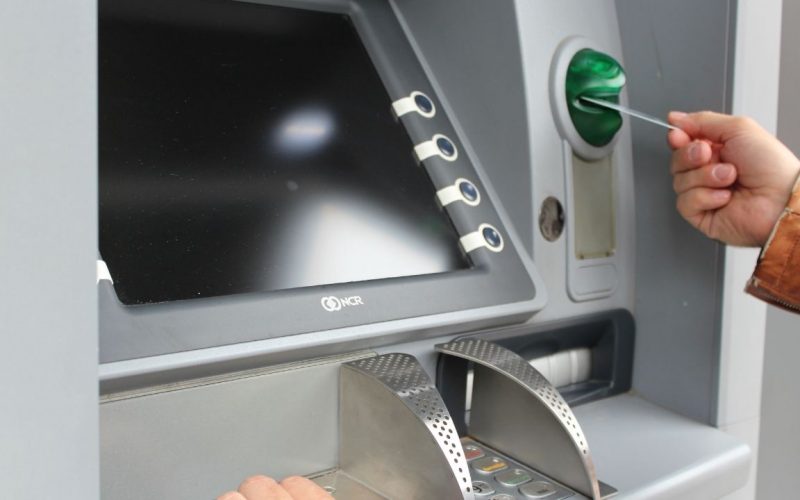In recent times, it has become normal to notice the Automatic Teller Machine (ATM) everywhere we find ourselves.
The ATM may be found in streets, marketplaces, stores, fuel stations, metro stations, motor parks, and so on.
The ATM business is a strategy in which business owners utilize to increase passive income. Most customers are willing to pay some money in service fees at any ATM nearest to them, to save stress, energy, and time.
The ATM is a profitable business to venture into and can be mounted everywhere around us.
Now that you have decided to venture into the ATM business, the next big thing is “how to start an ATM business”.
Well, you have nothing to worry about as this article is specifically written to guide you on how to start an ATM business.
If you are ready, then let’s start.
How to Start an ATM Business
Now that you have decided to go into the ATM business, you must be ready to take the next step which involves how to start the ATM business.
Below are 8 steps that would guide you towards starting your ATM business. The relevance of these steps is that they ensure your new business is properly planned, registered properly, and legally compliant.
STEP 1: Consider the costs of getting started.
This covers expenses such as office space, ATM machine purchases, legal or business formation fees, and personnel costs.
While you won’t need an office or a lot of materials for this type of business, there are a few things you’ll need to buy.
How many machines you plan to start with will determine your total investment. Depending on the type, each machine will cost anywhere from $3,000 to $10,000.
On a rotational basis, each machine should have at least $2,000 in cash. Only an insurance policy, a bag for transferring cash, tools for routine machine maintenance, and a reliable vehicle are required.
Each machine will require access to a phone line or the Internet, as well as a computer to monitor their status.
STEP 2: Form a legal entity
The sole proprietorship, partnership, limited liability company (LLC), and corporation are the most popular business structures.
If your ATM business is sued, forming a legal business entity such as an LLC or corporation protects you from being held personally accountable.
READ MORE: Why Writing Business Letters Is So Important In Today’s World?
STEP 3: Make a list of suitable retail sites for an ATM.
Gas stations, bars, and convenience stores all fall within this category. These are the places where you’ll find your target clients.
STEP 4: Register for taxes
Before you can start your ATM business, you’ll need to register for a number of state and federal taxes.
STEP 5: Open a business bank account
This step on how to start an ATM business is crucial, as expenses are recorded from the business bank account.
It is advisable that the entrepreneur open a business bank account that is different from that of his or her personal bank account to avoid putting his personal resources at risk in cases where the business is sued.
STEP 6: Sell or lease ATM machines to interested company owners.
There are retailers and small company owners that are seeking for ATM business owners to lease from.
Negotiate the best bargain possible with retailers and small company owners while keeping your costs in mind, especially if you are providing a full-service arrangement.
READ MORE: Business In the New Normal: 5 Trends Redefining the Business World
STEP 7: Place the ATM machine in place
Load cash into the machine once it’s been installed, and begin collecting your fees. If you’re utilizing a full-service model, you’ll need to service the ATM machine on a regular basis to keep it completely functional.
STEP 8: Expand your company.
Find new sites and provide them with ATM machines to expand your business. Your employees, as well as your inventory of ATM machines, will expand as your clientele grows.
Now that we have been able to look at the easy steps on how to start an ATM business, we can now look at “how profitable the ATM business is”
READ MORE: Creating a Website: Simple Steps For Creating Website For Your Business
How Profitable is the ATM business?
The income potential of one ATM at a retail facility with considerable foot traffic may be as high as $700 per month.
However, not all of your ATMs may be located in certain locations, which could result in larger or lower monthly net income.
When determining where to put your ATM machines, keep in mind that they shouldn’t be too far away from the “home base” or from each other.
The longer you have to go, the more money you’ll spend on services and the more time you’ll waste. It is preferable to have a close-knit community, particularly when first starting out.
Also, make sure you have agreements/contracts in place with your merchants (places where you will put your ATMs) and don’t sell yourself short on surcharge fees and commissions to the merchants.
You might be able to negotiate a somewhat higher surcharge fee (again, verify local norms), pay a commission, and still make a nice profit.
Also, if you want to establish your own ATM business, buying a few quality secondhand ATM machines is a terrific method to save some money upfront and enjoy the ATM firm’s net earnings sooner.
READ MORE: Mortgage Notes: A Detailed Beginners’ Guide with Examples & Samples
Mistakes to Avoid When Starting an ATM business
Now that we have understood how to start an atm business and how profitable an ATM business is, we also need to look at the mistakes to avoid when starting an ATM business. Avoid the following mistakes.
#1. Overestimate cash flow
There are numerous websites that claim that each ATM may earn you $500 per month or more. The majority of the time, these projections are way off the mark.
My advice is to conduct your research and budget for $250-$300 in earnings on the high end. On the low end, $150-$200 is a solid bet. In the ATM business, make some calls, chat to merchants, and be conservative with your earning forecasts.
#2. Buying of old equipment(ATM)
Purchasing secondhand ATM equipment may appear enticing and cost-saving, but you must be very mindful of the kind of ATM machine you purchase right now.
When starting up an ATM business, it is advised that you should invest in new equipment because EMV rules are now in effect.
When you purchase new equipment, you will receive a 2-year parts warranty and will be setting your firm up for success. If you buy old equipment, you risk having to do a lot of maintenance and possibly losing sites because of out-of-service machines.
READ MORE: Isoquant: Best Easy Guide for Beginners and Pros
#3. Underestimating capital requirements
To load the machines on a rotating basis, you’ll need cash. You should budget at least $2000 per terminal per week.
If you want to deploy 10 terminals, you’ll need at least $20k in working capital, if not more, to keep the machines running.
#4. Overlook EMV
Carry out a proper study on EMV and ensure that you understand which makes/models can be upgraded and how much it will cost.
When EMV is introduced, this will save you time and headaches. The majority of new machines sold in 2018 are EMV-enabled.
#5. Not starting up a bank relationship
With Operation Chokepoint and other concerns in the mix, you should check with your bank or a local bank to see whether they can support your ATM business. At this time, some banks will not support the ATM business, so make sure yours does.
READ MORE: Mortgage Calculator Amortization: A Comprehensive Guide (Updated)
#6. Setting your margins too low
While it comes to extra fees and commissions, be cautious when negotiating with your merchants.
Don’t give too much of your profit margin away. You must be familiar with the market and understand what is expected, while also being careful not to give too much away. You will be lot satisfied with your revenue in the long term if you establish your margins correctly right away.
#7. Contracts that have not been signed
You should make every effort to secure written agreements with all of your businesses if you wish to sell your locations or defend your ATM location.
Many operators I’ve seen operate their ATM business without contracts, and when it comes time to sell, the value is eroded.
You’ll also have nothing to fall back on if the retailers decide to remove your ATM or allow a competitor in. The bottom line is to get contracts signed.
#8. Geographical disadvantages
Make sure your locations aren’t too far off from each other or from your home base. Make an informed decision on which territory to pursue and do your best to stick to it.
The greater the distance between your locations, the more your time and service charges will be. A well-knit network of machines is thus more desirable to purchasers.
READ MORE: Mortgage Calculator Refinance Guide: Overview, Comparisons, & All you need
Bottom Line
I hope this article carefully explains the processes involved in starting an ATM business, as well as the mistakes to avoid.
If you have any questions or suggestions, kindly let me know in the comments section.
Good luck!
Recommendations
- Secured Bonds: The Ultimate Guide
- How To Become A Mortgage Broker: A Comprehensive Guide for US Citizens (+ Free Tips)
- Credit Shelter Trust: The Complete Guide for Beginners (+ Quick Tips)
- AD and D Insurance: Definition, Benefits, Coverage, & Payouts
- How To Get Credit For A Business: Best Effective Steps to Follow Now!!!
References






